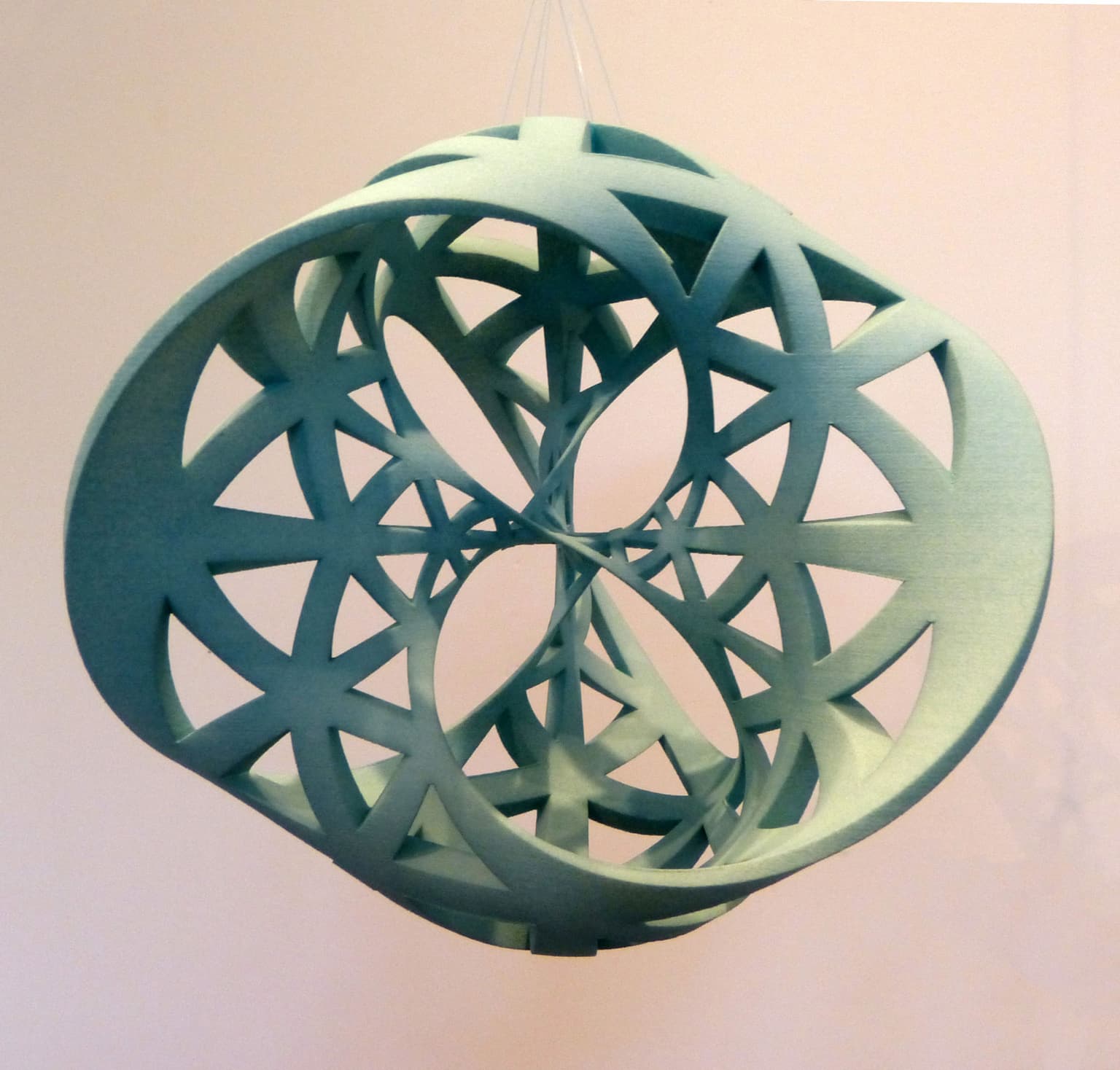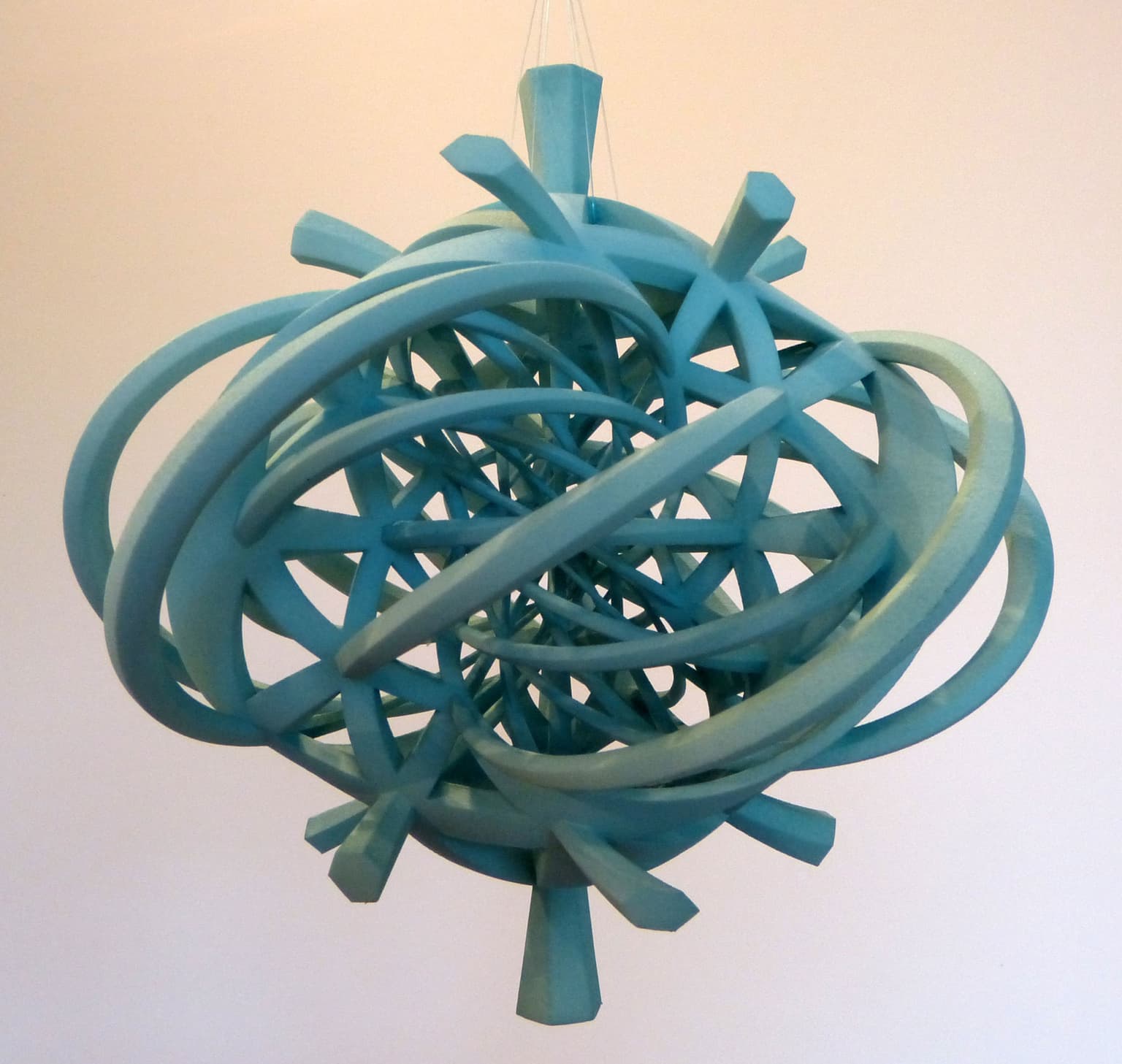2019 Icerm Illustrating Mathematics
Saul Schleimer and Henry Segerman
Artists
Saul Schleimer
Reader in Mathematics
Mathematics Institute, University of Warwick
Coventry, United Kingdom
Statement
Saul Schleimer is a geometric topologist, working at the University of Warwick. His other interests include combinatorial group theory and computation. He is especially interested in the interplay between these fields and additionally in the visualization of ideas from these fields. Henry Segerman is an Associate Professor in the Department of Mathematics at Oklahoma State University. His interests include geometry and topology, 3D printing, virtual reality, and spherical video.
Artworks

(3,3) Seifert Surface
16 x 14 x 15 cm
PA 2200 Nylon Plastic, Selective-Laser-Sintered; Rit Dye
2014

(3,3) Seifert Surface with Fibers
21 x 19 x 21 cm
PA 2200 Nylon Plastic, Selective-Laser-Sintered; Rit Dye
2014